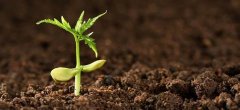What are the effects of Taiwan red quinoa and what are the health benefits? How to eat red quinoa is better
How to eat Taiwan red quinoa? Taiwan red quinoa is usually cooked with brown rice or white rice, while quinoa in Europe and the United States is mostly cooked and cooked with fruits and vegetables to make a salad. The red quinoa sold on the market can be divided into shelled red quinoa and shelled red quinoa, the red quinoa with small brown particles is the shelled product, on the contrary, the red quinoa with peach bright appearance is red quinoa with different taste and flavor; in addition, most of the quinoa sold in the market have also been shelled.

The functional components and most of the dietary fiber of red quinoa are mainly distributed in the "shell" of red quinoa, that is, the structure of flowers. Red quinoa with shell retains complete nutrients, but the taste of red quinoa with shell is heavy and bitter, and its acceptance is not as high as that of shelled red quinoa.
The shelled red quinoa particles, such as sesame seeds, are small, yellowish brown, soft in taste, and have a slight grain flavor. It is not easy to detect the addition of dishes, especially suitable for novice, children or elders to eat, but the removal of the outer layer of the bright red quinoa shell will improve the taste of the red quinoa, but at the same time, due to the loss of dietary fiber and functional components contained in the shell, it will reduce the original antioxidant activity or scavenging ability of the red quinoa. However, it does not cause a significant loss of protein and other mineral components.
In short, if you want to fully absorb the functional ingredients contained in red quinoa, you should choose red quinoa with shell, but if you mind the taste and flavor of red quinoa shell, choosing unshelled red quinoa with other whole rootstocks can also help to increase the diversity of nutrients in staple foods.
Internet rumors about Chenopodium
As for the safety considerations of excessive intake of Chenopodium quinoa, it is rumored that it may die because it contains more natural plant antimicrobial agent diosgenin than shelled quinoa. In fact, excessive diosgenin can indeed rupture red blood cells in the body. However, most of the diosgenin entering the digestive tract through oral intake cannot be absorbed, and it is more dangerous unless diosgenin is given by injection. And some studies have pointed out that diosgenin has the effects of lowering cholesterol and anti-inflammation.
In addition, some domestic studies have pointed out that when experimental animals overeat shelled quinoa, it is easier to increase the liver index than eating shelled quinoa, which may be due to the protective effect of natural substances in shelled quinoa.
However, scholars have also calculated the daily intake of red quinoa. In terms of uncooked weight, the shelled Taiwan red quinoa is 70.5 grams, about 1.5 cups of rice cups, and 126 grams of shelled quinoa, about three rice cups is a safe dose.
Matters needing attention in ingestion of Chenopodium
In addition, it should be noted that red quinoa, similar to quinoa, belongs to whole-grain rhizomes with higher potassium content and higher protein content, such as brown rice and grain rice, which are not suitable for patients with kidney disease. Due to the decline in the ability of the kidney to metabolize potassium and nitrogenous waste, if you want to eat red quinoa or quinoa, you should pay attention to the amount, so as to avoid excessive intake of potassium and protein and greatly increase the burden on the kidney.
It is also worth mentioning that domestic scholars have observed that the gluten content of red quinoa is not as high as that of rice and wheat, so for people who are gluten-intolerant, they might as well try to accept quinoa instead of rice and wheat as part of the staple food.
- Prev

The growing conditions required for green plants planted in flower beds, the influence of soil ph on crops
The key to successful and problem-free gardening is choosing plants that best suit your garden conditions. Plan your home garden to match the most important features of your property-sun and soil. Plants rely on light as a source of energy for growth, flowers and fruits. Garden bed reception
- Next

Are eggs the best source of food protein? Which is better, white eggs or yellow eggs?
Eggs are a cheap and good source of dietary protein. The so-called "excellent" refers to the proportion of essential amino acids in egg protein, which is quite close to the proportion of essential amino acids in human protein structure.
Related
- A course of planting techniques and methods on how to grow carrots
- How to plant the latest tulips?
- Is it better to pick tea in the morning or in the afternoon? When is the best time for tea to be picked? what is the third or fifth tea?
- Launch Yuanxiao Happy combination Haocha + Tea Yuan healthy Taste
- Penghu Tourism "Fireworks 20 Parade with You"
- 2022 West Lake Happiness holds "Digital Revitalization Voucher" and draws iphone13 and laptop.
- Banqiao Fuzhou social houses are designed to change start-up combined with police elimination to create a safe and livable environment
- The convenient measure of "mechanical weeding" in Xinbei has been abused and the Agriculture Bureau has imposed heavy penalties on the illegal land consolidation.
- Changgeng University Joins Hands with Four Memory Factories to Rescue Memory Talent Shortage
- The list of Taiwan's top 100 MVP managers is listed by the Director-General of the Farmers' Association of Sanxia District.

